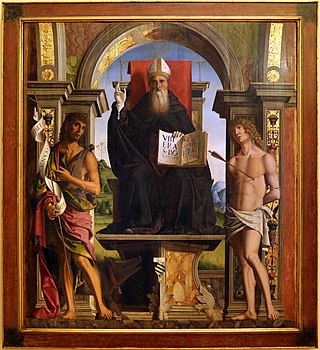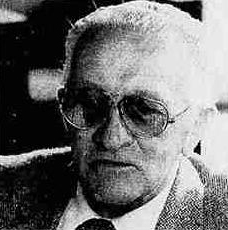
Francesco de Sanctis was an Italian literary critic, scholar and politician, leading critic and historian of Italian language and literature during the 19th century.

The Forlivese school of art was a group of Italian Renaissance painters and other artists. Most were born in Forlì or near it in the Emilia-Romagna region of Italy. Some other artists went to Forlì to study.
Ludovico Geymonat was an Italian mathematician, philosopher and historian of science. As a philosopher, he mainly dealt with philosophy of science, epistemology and Marxist philosophy, in which he gave an original turn to dialectical materialism.

Tullio De Mauro was an Italian linguist and politician. De Mauro was Professor Emeritus of General Linguistics at the Sapienza University of Rome, and held the post of Italian Minister of Education from 2000 to 2001.

Piero Calamandrei was an Italian author, jurist, soldier, university professor, and politician. He was one of Italy's leading authorities on the law of civil procedure.

Gianfranco Pasquino is an Italian political scientist.

Alessandro Barbero is an Italian historian, novelist and essayist.
Food & History is a multilingual scientific journal that is published since 2003. It is the biannual scientific review of the European Institute for the History and Cultures of Food (IEHCA) based in Tours. It publishes papers about the history and culture of food.

Agostino Paravicini Bagliani is an Italian historian, specializing in the history of the papacy, cultural anthropology, and in the history of the body and the relationship between nature and society during the Middle Ages.
Luca Serianni was an Italian linguist and philologist.

Pietro Trifone, is an Italian linguist.
Mario Rosa was an Italian historian.
Paul Anthony Ginsborg was a British historian. In the 1980s, he was Professor at the University of Siena; from 1992, he was Professor of Contemporary European History at the University of Florence.
Andrea Della Corte was an Italian musicologist and critic. Born in Naples on 5 April 1883, Della Corte studied law at the University of the native city, but was self-taught in music. After some short experiences in Neapolitan papers, he moved to Turin, where he was music critic for La Stampa from 1919 to May 1967. He brought the music journalism in Italy to a level of «professionalism hitherto unknown». In Turin, Della Corte also taught history of music, both at the Turin Conservatory (1926–53) and at the University of Turin (1939–53).
Nino Valeri was an Italian historian.

Chiara Frugoni was an Italian historian and academic, specialising in the Middle Ages and church history. She was awarded the Viareggio Prize in 1994 for her essay, Francesco e l'invenzione delle stimmate.
Enrico Comba was an Italian historian and anthropologist, teacher of anthropology of religion at the University of Turin.
Gian Piero Brunetta is an Italian film critic, film historian, and academic.

Massimo Mila was an Italian musicologist, music critic, intellectual and anti-fascist.
Giacomo Todeschini is an Italian historian, medievalist, specialized in history of economic thought.










